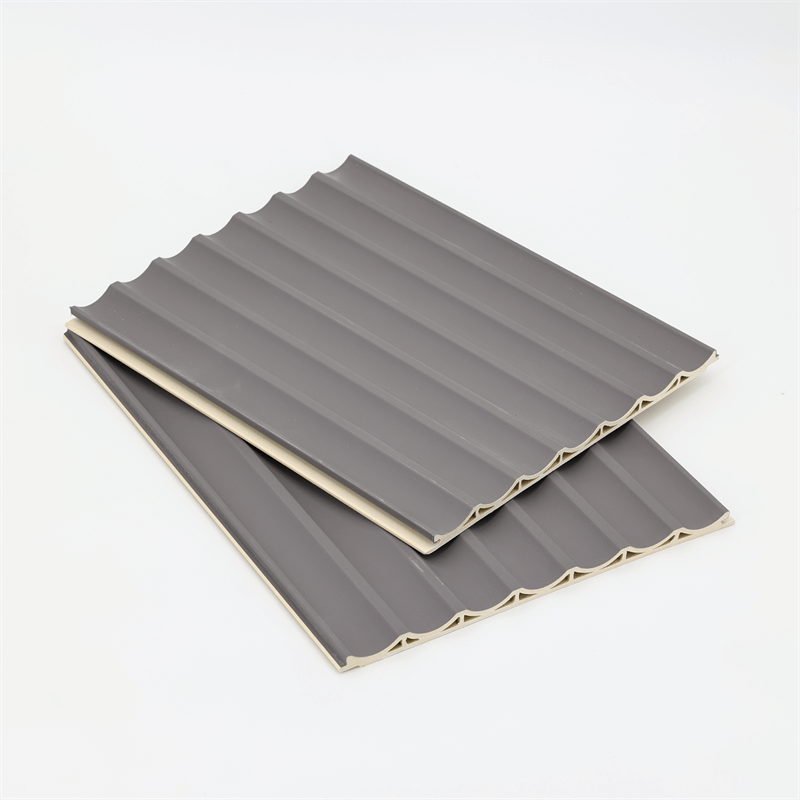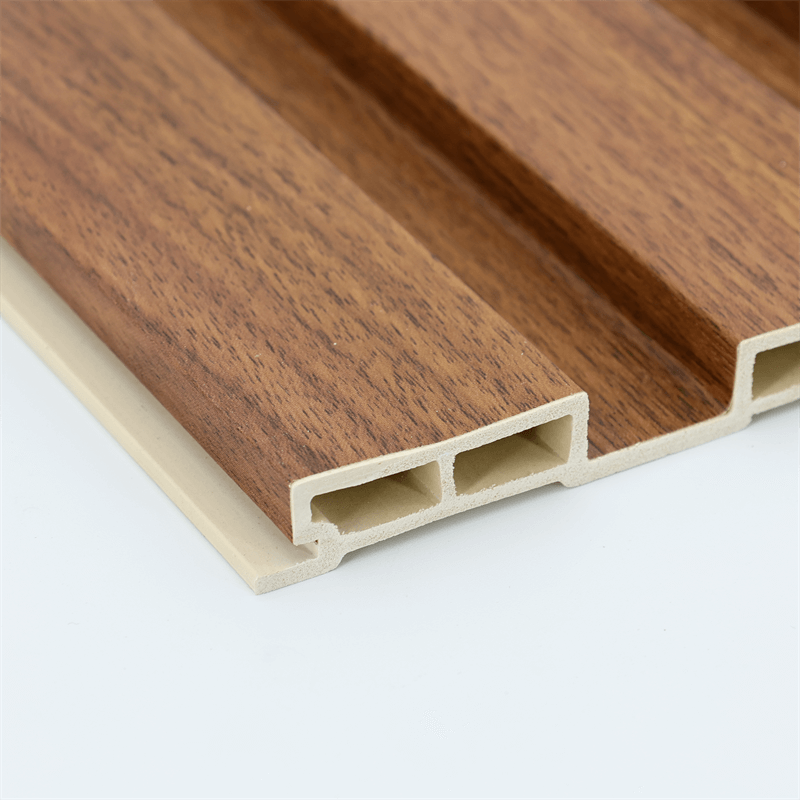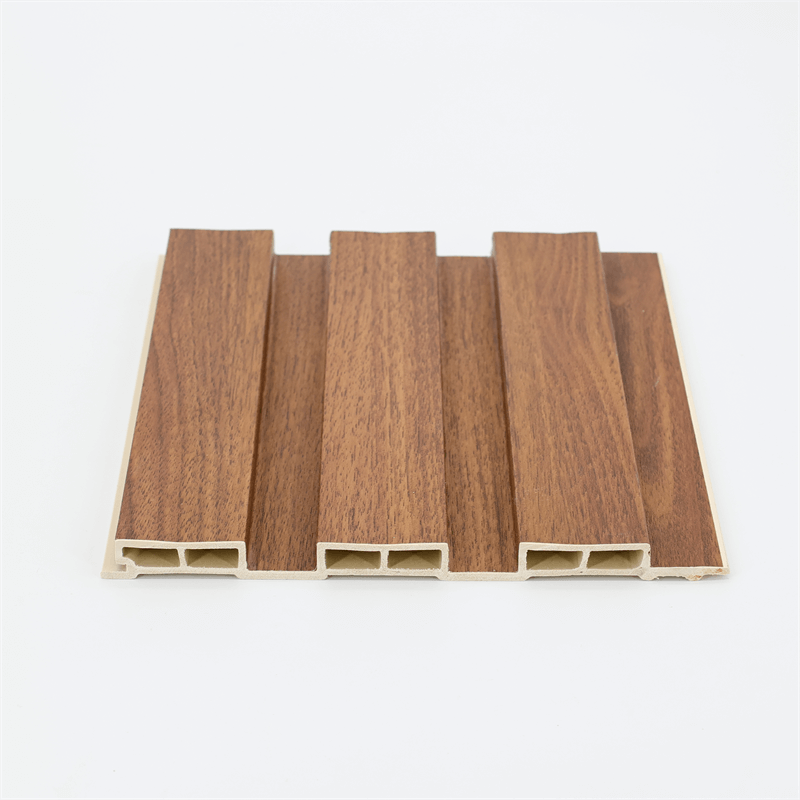The choice of wall coverings is a significant decision in interior design, impacting the aesthetics, functionality, and longevity of a space.
Wood-Plastic Composite (WPC) wall panels have gained popularity as an alternative to traditional wall coverings like paint, wallpaper, and tiles.
This essay presents a comparative analysis of WPC wall panels and traditional wall coverings, exploring their differences in terms of aesthetics, durability, maintenance, and environmental impact.
I. Aesthetics:
Aesthetics play a vital role in interior design, setting the tone and visual appeal of a space.
WPC wall panels offer a natural wood-like appearance that adds warmth, texture, and sophistication to a room.
The panels are available in various colors, patterns, and finishes, allowing for customization to match different design styles.
Additionally, WPC panels can be molded into different profiles, providing creative flexibility for architects and designers.
In contrast, traditional wall coverings offer diverse options as well. Paint allows for a wide range of colors and finishes, while wallpaper offers patterns, textures, and even custom designs.
Tiles provide a sleek and polished look with a variety of materials such as ceramic, porcelain, or natural stone.
The choice between WPC wall panels and traditional wall coverings depends on the desired aesthetic outcome and the specific design requirements of the space.
II. Durability and Maintenance:
Durability and maintenance are essential considerations when selecting wall coverings, especially in high-traffic areas or environments prone to moisture and wear.
WPC wall panels exhibit excellent durability, as they are resistant to moisture, scratches, stains, and impact.
They do not rot or warp like natural wood, making them suitable for both interior and exterior applications. WPC panels require minimal maintenance, typically limited to regular cleaning with mild soap and water.
Traditional wall coverings vary in terms of durability and maintenance requirements. Paint may require periodic touch-ups or repainting to maintain its appearance.
Wallpaper can be susceptible to peeling or damage in high-humidity areas and may require replacement over time.
Tiles, while durable, can crack or chip if subjected to impact or heavy loads. Grout maintenance is necessary for tiles to prevent discoloration and ensure cleanliness.
III. Installation and Ease of Use:
The ease of installation and use is an important consideration when comparing WPC wall panels to traditional wall coverings.
WPC panels are lightweight and easy to handle, allowing for quick and straightforward installation.
They can be mounted directly onto walls, saving time and labor costs. The modular nature of WPC panels also facilitates easy replacement or reconfiguration if needed.
Traditional wall coverings require different installation techniques. Paint requires surface preparation, priming, and multiple coats.
Wallpaper installation can be time-consuming, requiring precise measurements, adhesive application, and careful alignment.
Tile installation involves surface preparation, adhesive application, grouting, and sealing.
These traditional methods often require professional expertise and may take longer to complete compared to WPC panel installation.
IV. Environmental Impact:
In the era of sustainability, considering the environmental impact of wall coverings is crucial.
WPC wall panels offer an eco-friendly option. They are composed of recycled wood fibers and plastic, reducing the demand for virgin materials.
WPC production consumes less energy compared to the manufacturing processes of traditional wall coverings.
Additionally, WPC panels can be recycled at the end of their lifespan, promoting a more circular approach to material use.
Traditional wall coverings vary in their environmental impact. Paint may contain volatile organic compounds (VOCs) that contribute to indoor air pollution.
Wallpaper production involves the use of natural resources and chemicals. Tiles require energy-intensive manufacturing processes and may not be recyclable.
However, eco-friendly options such as low-VOC paints, sustainable wallpaper materials, and recycled or eco-friendly tiles are available to mitigate the environmental impact.
In conclusion, the choice between WPC wall panels and traditional wall coverings depends on various factors such as aesthetics, durability, maintenance, and environmental impact.
WPC wall panels offer a natural wood-like appearance, durability, low maintenance, and environmental sustainability.
Traditional wall coverings provide diverse aesthetic options but may vary in terms of durability, maintenance requirements, and environmental considerations.
The decision ultimately rests on the specific needs and preferences of the space and the project.
By carefully considering the comparative analysis of WPC wall panels and traditional wall coverings, architects, designers, and homeowners can make an informed choice that aligns with their design vision, budget, and sustainability goals.
In conclusion, the choice between WPC wall panels and traditional wall coverings is a crucial decision in interior design.
While both options have their merits, it is essential to consider factors such as aesthetics, durability, maintenance, and environmental impact.
WPC wall panels offer a natural and sophisticated wood-like appearance, providing warmth and texture to a space.

They exhibit excellent durability, resistance to moisture, scratches, and stains, making them suitable for high-traffic areas.
Additionally, WPC panels require minimal maintenance, contributing to their long-lasting appeal.
From an environmental perspective, WPC panels utilize recycled materials and can be recycled at the end of their lifespan, promoting sustainability.
Traditional wall coverings, on the other hand, provide a diverse range of options to achieve different aesthetics.
Paint allows for a wide selection of colors and finishes, while wallpaper offers patterns, textures, and custom designs.
Tiles provide a polished and sleek look with various material choices. However, traditional wall coverings may have different maintenance requirements and environmental considerations.
The decision ultimately depends on the specific needs and priorities of the project. If durability, low maintenance, and sustainability are key considerations, WPC wall panels provide a compelling choice.
However, if a wide range of aesthetic options or specific material preferences are desired, traditional wall coverings may be more suitable.
Architects, designers, and homeowners should carefully assess the requirements of the space, taking into account factors such as aesthetic goals, durability needs, maintenance preferences, and environmental impact.
By conducting a comparative analysis between WPC wall panels and traditional wall coverings, informed decisions can be made to create stylish, functional, and sustainable interiors.
Ultimately, the goal is to create a space that reflects the desired aesthetic, meets functional requirements, and aligns with sustainability goals.
Whether choosing WPC wall panels or traditional wall coverings, the selected option should contribute to the overall design vision, enhance the longevity of the space, and create an environment that is both visually appealing and conducive to the well-being of its occupants.


